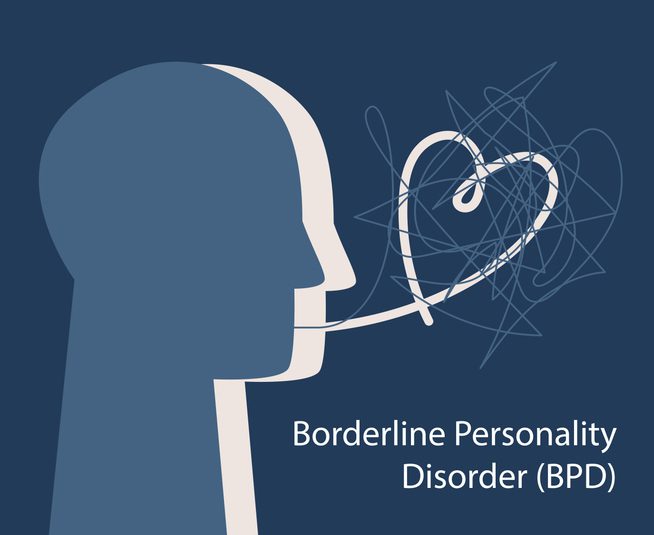Borderline personality disorder (BPD) is a mental health disorder that primarily affects an individual’s ability to manage their emotions in a healthy, sustainable way. People with borderline personality disorder tend to be young adults, and their brains have some structural and functional differences from the rest of the population, particularly in parts that control impulses and emotions. However, it’s still unclear if the neurological component is genetic or if the disorder itself causes the brain to change. BPD is also correlated with trauma, with a high number of people who have BPD reporting experiences of trauma, conflict, and abuse.
People with BPD have very little control over their emotions—which are often experienced in unpredictable extremes. This inability to manage emotions impacts relationships and self-image in lasting and negative ways.
BPD and SUD: A Common Dual Diagnosis
People with BPD often struggle with SUD. In fact, about 78% of people diagnosed with BPD have a co-occurring addiction to drugs or alcohol. In addition, BPD can also be accompanied by other mental health disorders, such depression, PTSD, or anxiety. The level of stress inherent in coping with comorbid illnesses like this can often push people to turn to drugs and alcohol for relief and escape.
But the more a person uses substances to cope with their emotional difficulties, the greater the chance of addiction. Alcohol and drugs may provide some temporary relief at first, but as tolerance and dependence develop, substance use will worsen the symptoms of BPD and make the person feel even more unable to control their life.
Thankfully, BPD can be effectively treated, both on its own and in conjunction with any coexisting substance use disorder.
What Are The Symptoms of BPD?
It’s important to note that not everyone with BPD experiences each symptom associated with the illness. Intensity, frequency, and length of symptoms can vary drastically from one person to the next. The most general indicator of BPD’s presence is a pattern of emotional impulsivity, fairly frequent and extreme mood swings, and a poor sense of self-image. BPD brains also tend to look at the world with a black-or-white perspective, viewing everything in polarized extremes. Every situation and person, no matter how complex, is either overwhelmingly good or catastrophically bad.
Other symptoms include:
- Inappropriate, reactive, or disproportionate displays of anger
- Reporting out-of-body experiences or bouts of extreme disassociation, like being outside of their body or an intense surrealist perception of reality
- Relating to themselves or speaking about themselves negatively or cruelly
- Suicidal threats or patterns of self-harm
- A feeling of perpetual emptiness
How Does BPD Manifest in Relationships?
The main phobia that recurs in the brains of people with BPD is an intense fear of abandonment. This often contributes to pendulum-like feelings for others, no matter their proximity to or history with the person. One day the individual may be fond and trusting of you. The next day they may despise you for no apparent reason. Others are either loved or hated. More common signals in romantic relationships and friendships can look like the following:
- Beginning an intensely intimate relationship with someone quickly or ending the same type of relationship just as quickly
- Abrupt mood swings that can last hours or days
- A history of unstable, conflict-filled relationships with family, long-term friends, and loved ones or exes.
BPD in relationships may also look like impulsive behaviors that include having unprotected sex on a whim or using drugs or alcohol to excess.
How is BPD Diagnosed, and Is There A Cure?
BPD can be diagnosed by a licensed psychiatrist, psychologist, social worker, or other type of accredited health professional. The diagnosis is formed by observing behaviors, noting symptoms, and studying family and medical history. Because the most intense displays of the disorder occur in the late teens and early twenties, most people receive a diagnosis around that period of time.
Currently, there is no cure for borderline personality disorder, but there are numerous treatment options and inspiring recovery and remission stories. People are able to manage the illness and live fulfilling lives. The two most popular and successful treatment approaches include regular cognitive behavioral therapy (CBT) sessions or dialectical behavior therapy (DBT). CBT works to change and replace the negative, extreme thought patterns that individuals with BPD experience. Similarly, DBT is a holistic subset of CBT that includes mindfulness and self-awareness exercises to lessen the more explosive symptoms of BPD.
Receive Treatment For BPD in Recovery With Waypoint Recovery Center
We have two locations in North Charleston and Cameron, South Carolina, staffed with teams that are passionate about helping those with co-occurring BPD and addiction get back on their feet. With our CBT program and family support services, every obstacle can be overcome. Contact us today for more information about our programs.





